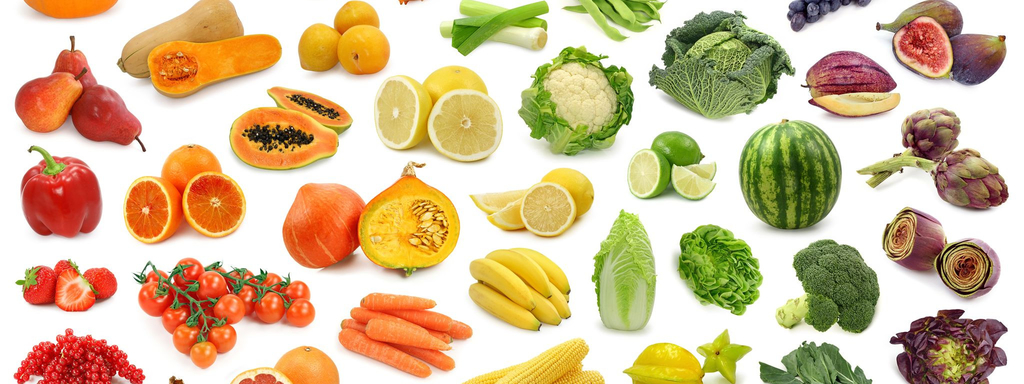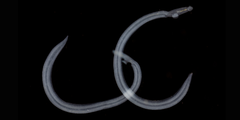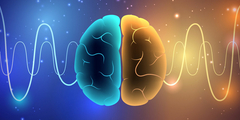
Bioflavonoïden vormen een grote en diverse groep van
fytochemicaliën die als pigmenten de felle kleuren bepalen van
veel groenten, fruit, dranken en specerijen.
Beste bezoeker, u heeft geen toegang.
Enkel (web)abonnees hebben toegang tot tijdschriftartikelen. Het webabonnement is nog in de maak.
U kunt zich wel alvast (gratis) registreren en tal van andere webartikelen raadplegen!
Auteur
Trefwoorden:
Verschenen in
Referenties
Adebamowo CA, Cho E, Sampson L, Katan MB, Spiegelman D, et al. (2005) Dietary flavonols and flavonol-rich foods intake and the risk of breast Cancer. Inter J Cancer 114: 628–633.
Aherne SA, O’Brien NM. Dietary flavonoids: chemistry, food content, and metabolism. Nutrition 2002;18:75-81.
Ahmad N. et al. Green tea constituent epigallocatechin-3-gallate and induction of apoptosis and cell cycle arrest in human carcinoma cells. J Natl Cancer Inst. 1997; 89(24):1881–1886.
Arts I. C. W. and Hollman P. C. H. Polyphenols and disease risk in epidemiologic studies. Am J Clin Nutr. 2005; 81:317–325.
Arts IC, Jacobs DR Jr, Gross M, Harnack LJ, Folsom AR (2002) Dietary catechins and cancer incidence among postmenopausal women: the Iowa Women’s Health Study (United States). Cancer Causes Control 13: 373–82.
Balentine D. A. et al. The chemistry of tea flavonoids. Crit Rev Food Sci Nutr.1997; 37:693-704.
Beecher G. R. Overview of dietary flavonoids: nomenclature, occurrence and intake. J Nutr. 2003; 133(10):3248-3254.
Beecher GR. Overview of dietary flavonoids: nomenclature, occurrence and intake. J Nutr 2003;133:3248S-3254S.
Bosetti C, Spertini L, Parpinel M, Gnagnarella P, Lagiou P, et al. (2005) Flavonoids and breast cancer risk in Italy. Cancer Epidemiol Biomar Prev 14:805–808.
Cao H. et al. Advance on the interaction between tea catechins and plasma proteins: Structure-affinity relationship, influence on antioxidant activity, and molecular docking aspects. Curr Drug Metab. 2013; 14(4):446-450.
Catagol B. et al. Resveratrol: French paradox revisited. Front Pharmacol. 2012; 3:141.
Colling M. et al. Nutrition survey of adults using a 7-day protocol- a pilot study in the Augsburg MONICA project. Oeffentl Gesundheitswes. 1989; 51:94–97.
Csiszar A. Anti-inflammatory effects of resveratrol: possible role in prevention of age-related cardiovascular disease. Ann N Y Acad Sci. 2011; 1215:117–122.
Cutler GJ, Nettleton JA, Ross JA, Harnack LJ, Jacobs DR, et al. (2008) Dietary flavonoid intake and risk of cancer in postmenopausal women: The Iowa Women’s Health Study. Inter J Cancer 123: 664–671.
Dai Q, Franke AA, Jin F, Shu XO, Hebert JR, et al. (2002) Urinary excretion of phytoestrogens and risk of breast cancer among Chinese women in Shanghai. Cancer Epidemiol Biomarkers Prev 11: 815–21.
Dai Q. et al. Is green tea drinking associated with a later onset of breast cancer? Ann Epidemiol. 2010; 20(1):74–81.
Darvesh A. S. et al. Oxidative stress and Alzheimer's disease: dietary polyphenols as potential therapeutic agents. Expert Rev Neurother. 2010; (5):729-745.
de Lorgeril M. et al. Mediterranean diet, traditional risk factors, and the rate of cardiovascular complications after myocardial infarction: final report of the Lyon Diet Heart Study. Circulation. 1999; 99:779–785.
De Pascual-Teresa S. and Sanches-Ballesta M. T. Anthocyanins: from plant to health. Phytochem Rev. 2008; 7:281-299.
Dew T. P. et al. Bone mineral density, polyphenols and caffeine: a reassessment. Nutr Res Rev. 2007; 20(1):89-105.
Dufresne C. J. and Farnworth E. R. A review of latest research findings on the health promotion properties of tea. J Nutr Biochem. 2001; 12:404-421.
Duthie SJ, Johnson W, Dobson VL. The effect of dietary flavonoids on DNA damage (strand breaks and oxidized pyrimidines) and growth in human cells. Mutat Res 1997;390:141-151.
Dwyer JT, Peterson JJ. Measuring flavonoid intake: need for advanced
Fink BN, Steck SE, Wolff MS, Britton JA, Kabat GC, et al. (2007) Dietary flavonoid intake and breast cancer risk among women on Long Island. Am J Epidemiol 165: 514–523.
Flavonoids: Chemistry, Biochemistry and Applications. Andersen ØM, Markham KR, editor. CRC Publication; 2005.
Franke AA, Custer LJ, Cooney RV et al. Inhibition of colonic aberrant crypt formation by the dietary flavonoids (+)-catechin and hesperidin. Adv Exp Med Biol 2002;505:123-133.
Goldbohm RA, Hertog MGL, Brants HAM, van Poppel G, van den Brandt PA (1998) Intake of flavonoids and cancer risk: a prospective cohort study. In: Armado R, Andersson H, Bardocz S, Serra F, eds. Polyphenols in food. Luxembourg: Office for Official Publications of the European Communities 159–66.
Grotewold E. The science of flavonoids. Springer; 2005.
Higdon J. V. and Frei B. Tea catechins and polyphenols: health effects, metabolism, and antioxidant functions. Crit Rev Food Sci Nutr. 2003; 43:89-143.
Hollman P. C. H. et al. Relative bioavailability of the antioxidant flavonoid quercetin from various foods in man. FEBS Letters.1997; 1-2(418):152-156.
Hui C, Qi X, Qianyong Z, Xiaoli P, Jundong Z, Mantian M. Flavonoids, flavonoid subclasses and breast cancer risk: a meta-analysis of epidemiologic studies. PLoS One. 2013;8(1):e54318
Jandet P. et al. The potential relationship of stilbene (resveratrol) synthesis to anthocyanin content in grape berry skins. Vitis. 1995; 34(2):91-94.
Jennings A, Welch AA, Fairweather-Tait SJ, Kay C, Minihane AM, et al. (2012) Higher anthocyanin intake is associated with lower arterial stiffness and central blood pressure in women. Am J Clin Nutr 96: 781–8.
Jian L. et al. Protective effect of green tea against prostate cancer: a case-control study in Southeast China. Int J Cancer. 2004; 108(1)130–135.
Johnson A. et al. Green tea and green tea catechin extracts: an overview of the clinical evidence. Maturitas. 2012; 73(4):280-287.
Johnson M. H. et al. Anthocyanins and proanthocyanidins from blueberry-blackberry fermented beverages inhibit markers of inflammation in macrophages and carbohydrate-utilizing enzymes in vitro. Mol Nutr Food Res. Published online March 2013.
Joseph J. A. et al. Reversing the deleterious effects of aging on neuronal communication and behavior: beneficial properties of fruit polyphenolic compounds. Am J Clin Nutr. 2005; 81:313– 316.
Kanwar J. et al. Recent advances on tea polyphenols. Frint Biosci (elite Ed.) 2012; 4:111-131.
Karlsen A. et al. Anthocyanins inhibit nuclear factor-kappaB activation in monocytes and reduce plasma concentrations of pro-inflammatory mediators in healthy adults. J Nutr. 2007; 137(8):1951-1954.
Keil U. and Kuulasmaa K. WHO MONICA Project: risk factors. Int J Epidemiol. 1989; 18:46–55.
Khan N. and Mukhtar H. Modulation of signaling pathways in prostate cancer by green tea polyphenols. Biochem Pharmacol. 2013; 85(5):667-672.
Khan N. and Mukhtar H. Tea Polypenols for health promotion. Life Sci. 2007; 81:519-533.
Kikuchi N. et al. No association between green tea and prostate cancer risk in Japanese men: the Ohsaki Cohort Study. Br J Cancer. 2006; 95(3):371–373.
Kim HP, Mani I, Iversen L et al. Effects of naturally occurring flavonoids and biflavonoids on epidermal cyclooxygenase and lipoxygenase from guinea-pigs. Prostaglandins Leukot Essent Fatty Acids 1998;58:17-24.
Kim HP, Son KH, Chang HW et al. Anti-inflammatory plant flavonoids and cellular action mechanisms. J Pharmacol Sci 2004;96:229-245.
Knekt P, Ja¨rvinen R, Seppa¨nen R, Helio¨vaara M, Teppo L, et al. (1997) Dietary Flavonoids and the Risk of Lung Cancer and Other Malignant Neoplasms.Am J Epidemiol 146: 223–230.
Knekt P, Kumpulainen J, Ja¨rvinen R, Rissanen, H Helio¨vaara M, et al. (2002) Flavonoid intake and risk of chronic diseases. Am J Clin Nutr 76: 560–568.
Kurahashi N. et al. Green tea consumption and prostate cancer risk in Japanese men: a prospective study. Am J Epidemiol. 2008; 167(1):71–77.
Lagouge M. et al. Resveratrol improves mitochondrial function and protects against metabolic disease by activating SIRT1 and PGC-1alpha. Cell. 2006; 127:1109–1122.
Lambert J. D. et al. Inhibition of carcinogenesis by polyphenols: evidence from laboratory investigations. Am J Clin Nutr. 2005; 81:284–291.
Larsson S. C. and Wolk A. Tea consumption and ovarian cancer risk in a population-based cohort. Arch Intern Med. 2005; 165(22):2683–2686.
Li Q. et al. Green tea consumption and lung cancer risk: the Ohsaki study. Br J Cancer. 2008;
Liggins J, Grimwood R, Bingham SA. Extraction and quantification of lignan phytoestrogens in food and human samples. Anal Biochem 2000;287:102-109.
Luo J, Gao YT, Chow WH, Shu XO, Li H, et al. (2010) Urinary polyphenols and breast cancer risk: results from the Shanghai Women’s Health Study. Breast Cancer Res Treat 120: 693–702.
Luo J. et al. Green tea and coffee intake and risk of pancreatic cancer in a large-scale, population-based cohort study in Japan (JPHC study). Eur J Cancer Prev. 2007; 16(6):542–548.
Markovic J. D. Flavonoids, the Role and the Importance in Modern Investigations. Acta Agriculturae Serbica. 2007; 12(23):25-36.
Mazur W. Phytoestrogen content in foods. Baillieres Clin Endocrinol Metab 1998;12:729-942.
Mink P. J. et al. Flavonoid intake and cardiovascular disease mortality: a prospective study in postmenopausal women. Am J Clin Nutr. 2007; 85:895–909.
Mukhtar H. and Ahmad N. Tea polyphenols: prevention of cancer and optimizing health. Am J Clin Nutr. 2000; 71:1698-1670.
Mursu J, Nurmi T, Tuomainen T, Salonen JT, Pukkala E, Voutilainen S. Intake of flavonoids and risk of cancer in Finnish men: The Kuopioischaemic heart disease risk factor study. Int J Cancer 2008;123:660-663.
Orsu P. Cerebroprotective potential of resveratrol through anti-oxidant and anti-inflammatory mechanisms in rats. J Neural Transm. Published online April 2013.
Pearson K. J. Resveratrol Delays Age-Related Deterioration and Mimics Transcriptional Aspects of Dietary Restriction without Extending Life Span. Cell Metab. 2008; 8:157–168.
Peng G, Dixon DA, Muga SJ et al. Green tea polyphenol (-)-epigallocatechin-3-gallate inhibits cyclooxygenase-2 expression in colon carcinogenesis. Mol Carcinog 2006;45:309-319.
Peterson J, Lagiou P, Samoli E, Lagiou A, Katsouyanni K, et al. (2003) Flavonoid intake and breast cancer risk: A case-control study in Greece. Brit J Cancer 89: 1255–1259.
Renaud S. and de Lorgeril M. Wine, alcohol, platelets, and the French paradox for coronary heart disease. Lancet. 1992; 339:1523–1526.
Rice-Evans C. A. et al. Structure- antioxidant activity relationships of flavonoids and phenolic acids. Free Radic Biol Med. 1996; 20:933-956.
Rodrigo R. et al. Antihypertensive role of polyphenols. Adv Clin Chem. 2012; 58:225-254.
Ross JA, Kasum CM. Dietary flavonoids: bioavailability, metabolic effects, and safety. Annu Rev Nutr. 2002;22:19-34.
Sanchez de Medina F, Vera B, G疝vez J et al. Effect of quercitrin on the early stages of hapten induced colonic inflammation in the rat. Life Sci 2002;70:3097-3108.
Sasazuki S. et al. Plasma tea polyphenols and gastric cancer risk: a case-control study nested in a large population-based prospective study in Japan. Cancer Epidemiol Biomarkers Prev. 2008; 17(2):343–351.
Scalbert A. et al. Polyphenols: antioxidants and beyond. Am J Clin Nutr. 2005; 81:215–217.
Steiner C. et al. Isoflavones and the prevention of breast and prostate cancer: new perspectives opened by nutrigenomics. Br J Nutr. 2008; 99 E Suppl 1:ES78-108.
Sun A. Y. et al. Resveratrol as a Therapeutic Agent for Neurodegenerative Diseases. Mol Neurobiol. 2010; 41(2-3):375–383.
Sun A. Y. et al. Resveratrol as a Therapeutic Agent for Neurodegenerative Diseases. Mol Neurobiol. 2011; 41(2-3): 375–383.
Sun Q. et al. Novel immunoregulatory properties of EGCG on reducing inflammation in EAE. Front Biosci. 2013; 18:332-342.
Surh YJ, Kundu JK, Na HK et al. Redox sensitive transcription factors as prime targets for chemoprevention with anti-inflammatory and antioxidative phytochemicals. J Nutr 2005;135:2993S-3001S.
tools. Public Health Nutr 2002;5:925-930.
Torres-Sanchez L, Galvan-Portillo M, Wolff MS, Lopez-Carrillo L (2009) Dietary consumption of phytochemicals and breast cancer risk in Mexican women. Publ Health Nutr 12: 825–831.
Van Dross R, Xue Y, Knudson A et al. The chemopreventive bioflavonoid apigenin modulates signal transduction pathways in keratinocyte and colon carcinoma cell lines. J Nutr 2003;133:3800S-3804S.
Velayutham P. et al. Green tea catechins and cardiovascular health: an update. Curr Med Chem. 2008; 15(18):1840-1850.
Wallace T. C. Anthocyanins in Cardiovascular Disease. Adv Nutr. 2011; 2(1):1–7.
Wang H. et al: Resveratrol in cardiovascular disease: what is known from current re-search? Heart Fail Rev. 2012; 17(3):437-448.
Wang L, Lee IM, Zhang SM, Blumberg JB, Buring JE, et al. (2009) Dietary intake of selected flavonols, flavones, and flavonoid-rich foods and risk of cancer in middle-aged and older women. Am J Clin Nutr 89: 905–912.
Wang L.-S. and Stoner G. D. Anthocyanins and their role in cancer prevention. Cancer Lett. 2008; 269(2): 281–290.
Wang M. et al. A case-control study on the dietary risk factors of upper digestive tract cancer. Zhonghua Liu Xing Bing Xue Za Zhi. 1999; 20(2):95–97.
Wang W, Wang F, Yang YJ, Hu ZL, Long LH, et al. (2011) The flavonoid baicalein promotes NMDA receptor-dependent long-term potentiation and enhances memory. Br J Pharmacol 162: 1364–79.
Williams RJ, Spencer JPE, Rice-Evans C. Flavonoids: antioxidants or signalling molecules? Free Rad Biol Med 2004;36:838-849.
Wu A. H. et al. COMT genotype, and breast cancer in Asian-American women. Cancer Res. 2003; 63(21):7526–7529.
Xu Q. and Si L. Y. Resveratrol role in cardiovascular and metabolic health and potential mechanisms of action. Nutr Res. 2012; 32(9):648-658.
Zhang M. et al. Green tea consumption enhances survival of epithelial ovarian cancer. Int J Cancer. 2004; 112(3):465–469.






